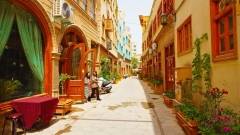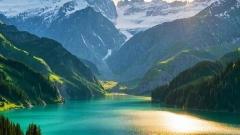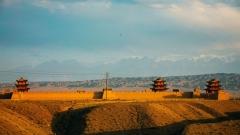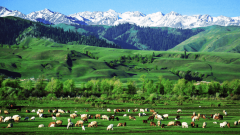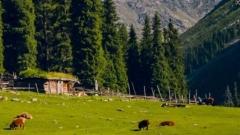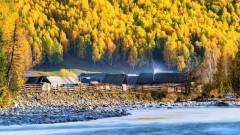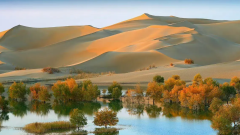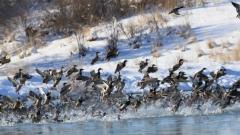Xinjiang Uygur Autonomous Region, stretching across China’s vast northwest, is a land of dramatic contrasts. While Southern Xinjiang dazzles with its Silk Road heritage and desert oases, Northern Xinjiang offers an even richer tapestry of pristine wilderness, nomadic culture, and fairy‑tale vistas. In this guide, we’ll introduce the ten must‑see attractions, the best seasons to visit each, and practical tips to help you plan the perfect Northern Xinjiang adventure.
1. Kanas Lake: The Enchanting Alpine Jewel
If you can only visit one place in Northern Xinjiang, make it Kanas Lake. Nestled at the foot of the Altai Mountains, this high‑altitude lake is famed for its ever‑changing hues—emerald, sapphire, jade, or even milky green depending on season, weather, and the surrounding foliage. Legend whispers of a lake monster “Huchun” lurking beneath the surface; if you’re lucky, you might spot a giant red carp over a meter long.
- Best Time to Visit: Spring through autumn, each season offering a different palette—verdant spring, azure summer, golden autumn foliage, and the frozen stillness of winter.
- Highlights: Take a boat ride for panoramic views of the shoreline forest; hike up the observation decks for sweeping vistas of the lake and peaks; sample locally foraged mushrooms and berries at a Lakeside Tuwa hamlet.
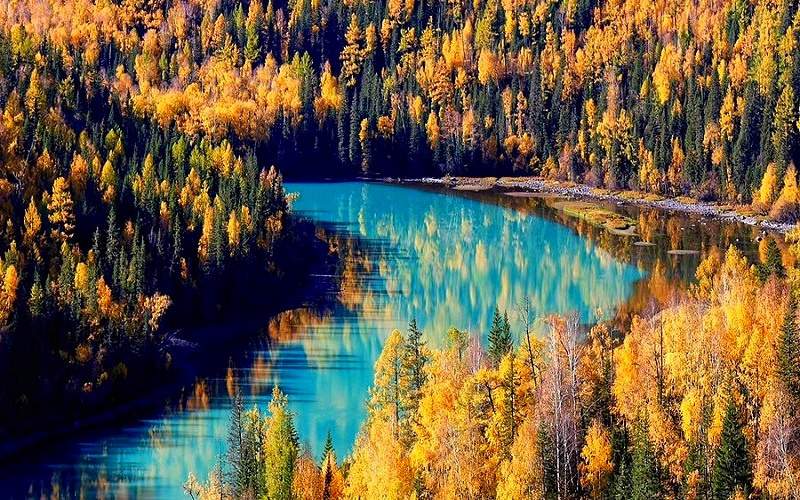
Kanas Lake
2. Hemu Village: Photography Paradise of the Tuwa People
Just 30 km from Kanas lies Hemu Village, a tiny settlement of the Tuwa ethnic group. Photographers flock here to capture that perfect shot: birch forests mirrored in winding streams, that early‑morning veil of mist drifting through wooden cabins, and in autumn, the forest ablaze with amber, gold, and crimson.
- Best Time to Visit: Year‑round. Spring and summer for lush greenery; autumn for vivid colors; winter when the village transforms into a “Little Switzerland” under pure white snow.
- Highlights: Horseback riding across meadows; rafting on the Hemu River; homestays with Tuwa families offering authentic cuisine and music.
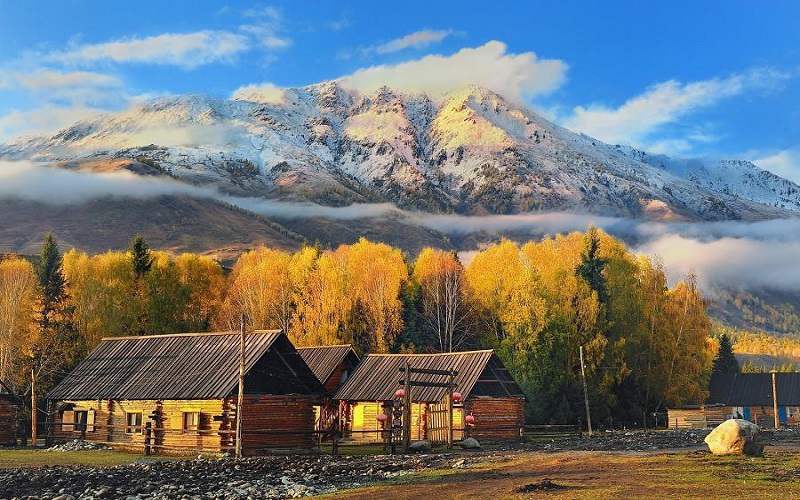
Hemu Village
3. Turpan: Desert Oasis of Grape Wine and Ancient Ruins
In stark contrast to the high mountains, Turpan sits in one of the world’s hottest and lowest depressions. Thanks to ingenious qanat irrigation (karez), it produces some of China’s sweetest grapes and raisins. Beyond the vines, Turpan’s rich history as a Silk Road hub left behind two UNESCO‑worthy ruins—Jiaohe and Gaochang ancient cities—and the stunning Buddhist cave art of Bezeklik Caves.
- Best Time to Visit: Late August to September, when the grape harvest is in full swing and local grape‑picking festivals fill the air with music and laughter.
- Highlights: Climb the red‑hot cliffs of Flaming Mountain at sunrise; cycle through the Grape Valley; explore underground karez tunnels; marvel at millennia‑old murals in the caves.
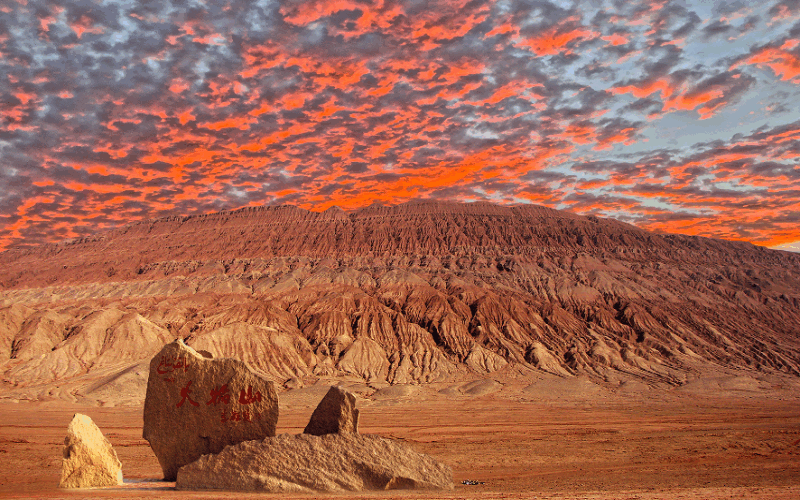
Turpan
4. Sayram Lake: “Clean Lake” Fringed by Wildflowers
Fed by Atlantic moisture blocked by the Tianshan Range, Sayram Lake—anciently known as the “Clean Lake”—lies over 2,000 m above sea level. Its water is so pure it supports no fish, earning it a sacred reputation among Kazakh and Mongolian herders. In spring and summer, the lakeshore blooms with wildflowers, while the surrounding peaks remain snow‑capped.
- Best Time to Visit: April through October for wildflowers; early autumn for mirror‑calm reflections.
- Highlights: Drive the scenic loop road; horseback rides into flower‑carpeted meadows; camping beneath star‑filled skies.
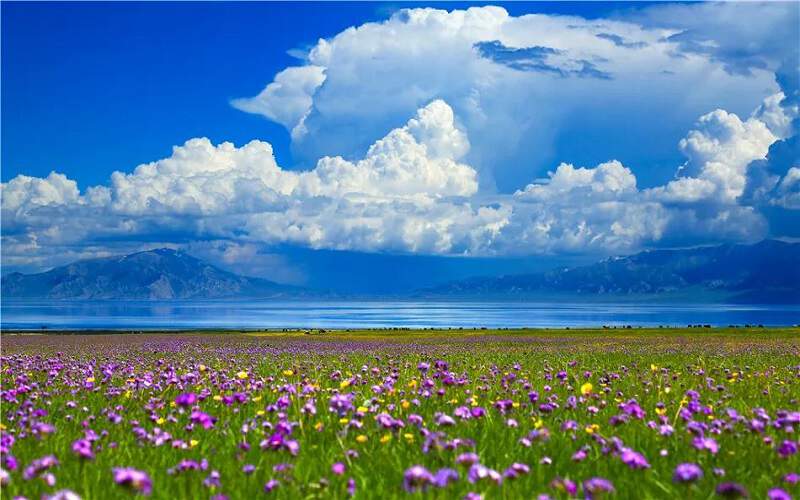
Sayram Lake
5. Kumtag Desert: Sand Dunes at the City’s Edge
Did you know you can touch sand dunes just steps from a modern city? Kumtag Desert, meaning “sand mountains” in Uygur, spreads over 1,880 sq km right next to Shanshan County. Its distinctive feather‑shaped dunes invite adventure seekers to hike, sand‑surf, or camel‑ride.
- Best Time to Visit: Spring and autumn to avoid midsummer heat.
- Highlights: Climb Chimney‑shaped Dune for 360° views; camel caravans at sunset; dune‑surfing on rented boards; night visits for a “sea of stars.”
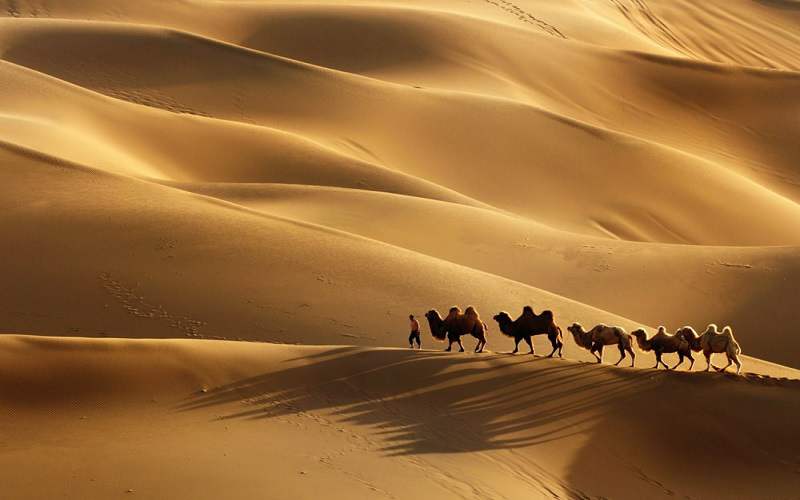
Kumtag Desert
6. Heavenly Lake (Tianchi): Legend of the Queen Mother
Just 97 km from Ürümqi, Heavenly Lake sits at 1,900 m on the slopes of the Bogda Peak. Local legend says this is the meeting place of Zhou Mu Wang (King Mu of Zhou) and the Queen Mother of the West. In summer, verdant pastures and grazing flocks contrast with the azure lake; winter turns it into a frozen realm of silence and light.
- Best Time to Visit: June to September for wildflowers and pastoral scenes; December to February for snow‑and‑ice photography.
- Highlights: Boat tours on the lake; chairlift ride up Bogda Peak; ethnic Kazakh yurt stays with folkloric performances.
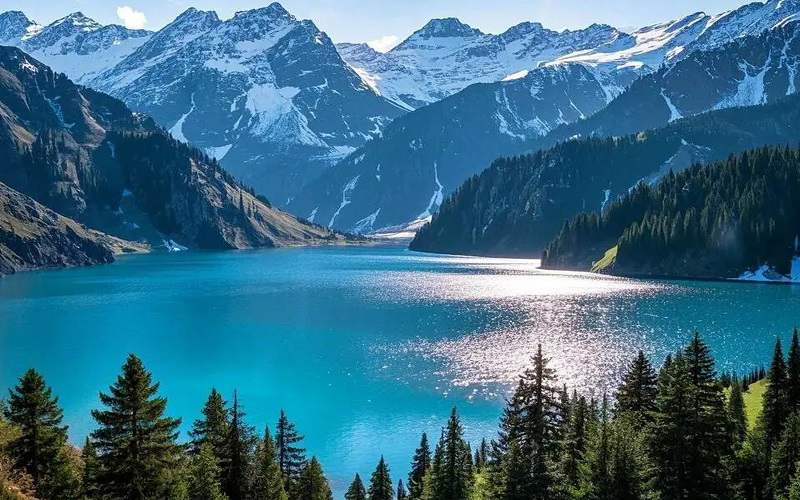
Heavenly Lake (Tianchi)
7. Bayanbulak Grassland: Swan Sanctuary on the Open Steppe
Known as “Rich Spring” in Mongolian, Bayanbulak Grassland is China’s second‑largest grassland and home to the country’s first swan nature reserve. Each spring, thousands of swans migrate here, turning the wetlands into a grand aviary. The meandering Kaidu River also cuts through, forming sceneries of nine bends and eighteen curves.
- Best Time to Visit: July and August for the Nadam Fair—horse racing, archery, wrestling—and abundant wildflowers.
- Highlights: Swan‑watching at dawn; riverboat rides along Kaidu’s bends; nomadic ger stays and local lamb‑roasting feasts.
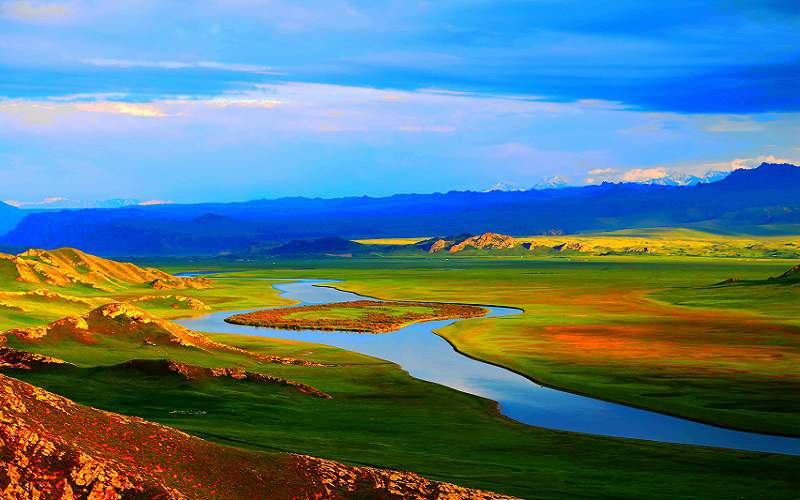
Bayanbulak Grassland
8. Nalati Grassland: Alpine Meadows of the West Tianshan
Part of the famed Altai‑Tianshan flyway, Nalati Grassland ranks among the world’s four great grasslands. High‑alpine meadows stretch endlessly, punctuated by dense forests. In June, colorful wildflowers carpet the fields, while Kazakh eagle‑hunters demonstrate falconry arts.
- Best Time to Visit: June to August, when pastures are green and cultural festivals abound.
- Highlights: Hot‑air balloon flights at sunrise; horseback treks through wildflower corridors; watching eagle‑hunting demonstrations.
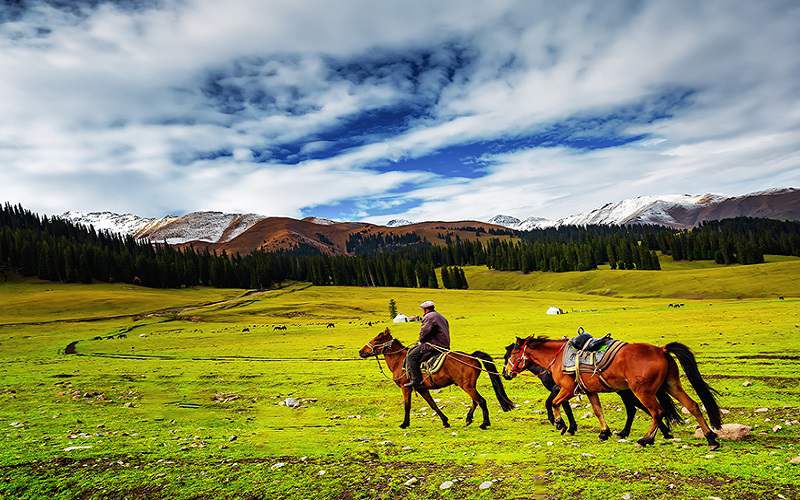
Nalati Grassland
9. Populus Diversifolia Forest: Ancient “Fossil” Trees
Xinjiang harbors the world’s largest stands of Populus diversifolia, ancient poplar species that can live over a thousand years. The Ruletai Forest near Lu Tou Gou is the largest continuous poplar forest globally, offering Cathedral‑like groves and golden autumn spectacles.
- Best Time to Visit: Late October to early November for peak yellow foliage.
- Highlights: Forest photography trails; stargazing under clear desert skies; picnic among towering trunks.
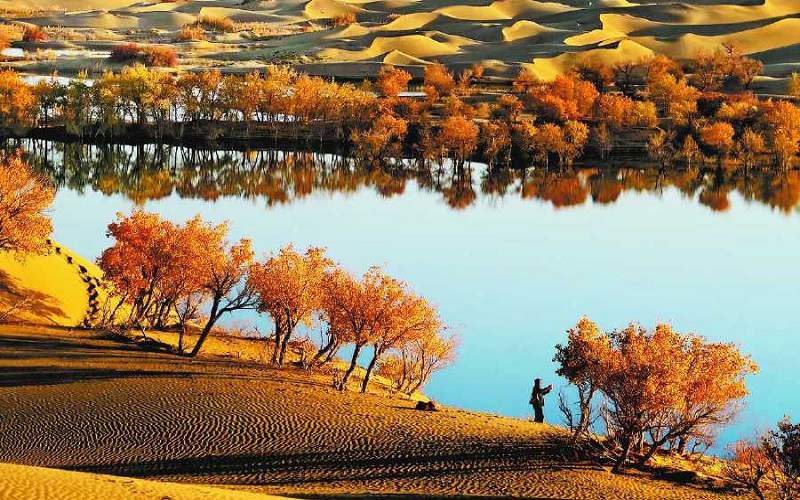
Populus Diversifolia Forest
10. Duku Highway: Epic Road Trip Across Tianshan
Stretching 561 km from Dushanzi to Kuqa, the Duku Highway is often hailed as China’s answer to Route 66. It carves through mountains, canyons, gorges, and grasslands, revealing every topographical wonder. Online influencers spotlight its “most beautiful canyon” and thrilling switchbacks.
- Best Time to Visit: June to September for open passes and wildflower blooms; avoid winter closures.
- Highlights: Drive through the Biubiubiu Grand Canyon; stop at remote alpine lakes; overnight in roadside yurts under Milky Road vistas.
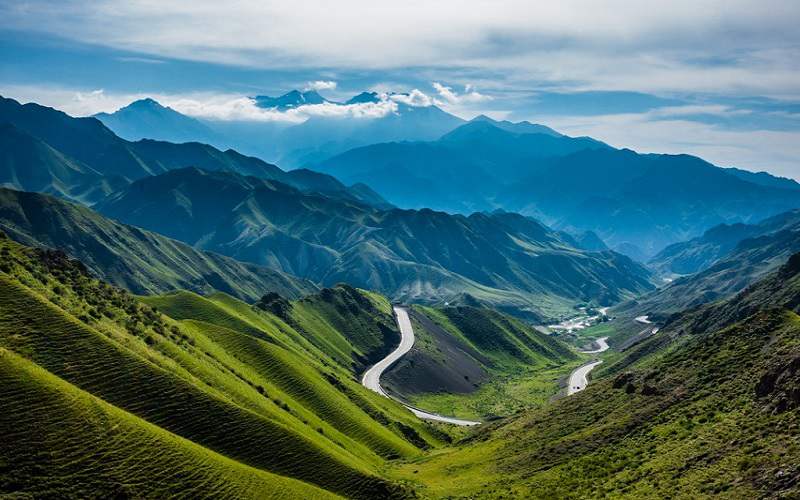
Duku Highway
Planning Your Northern Xinjiang Trip & China Dragon Travel’s One‑Stop Service
Northern Xinjiang’s vastness and varied terrain demand careful planning. From securing domestic flights, train tickets, and highway permits to booking accommodations, arranging local guides, and ensuring health and safety protocols, the details can quickly become overwhelming. That’s where China Dragon Travel comes in. As a leading specialist in Xinjiang tours, we offer:
- Customized Itineraries tailored to your interests—nature photography, cultural immersion, adventure sports.
- Expert Local Guides fluent in English, knowledgeable about each region’s history, ecology, and cultures.
- Safety & Support with 24/7 assistance, emergency medical arrangements, and flexible re‑routing if needed.
Whether you’re chasing the Northern Lights in the Altai, camping beneath starlit sand dunes, or indulging in Uygur cuisine at a Turpan vineyard, China Dragon Travel ensures every moment is seamless.



